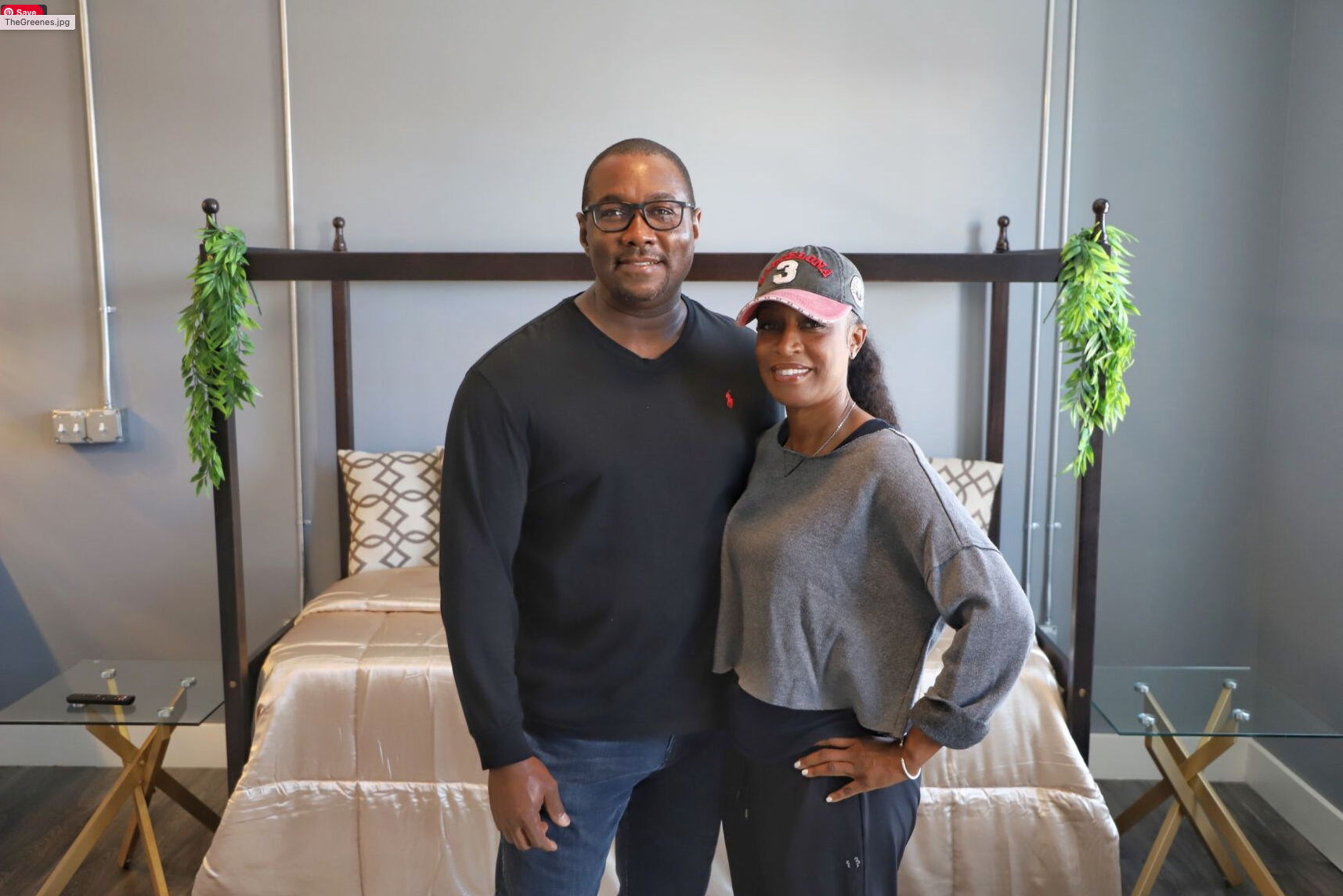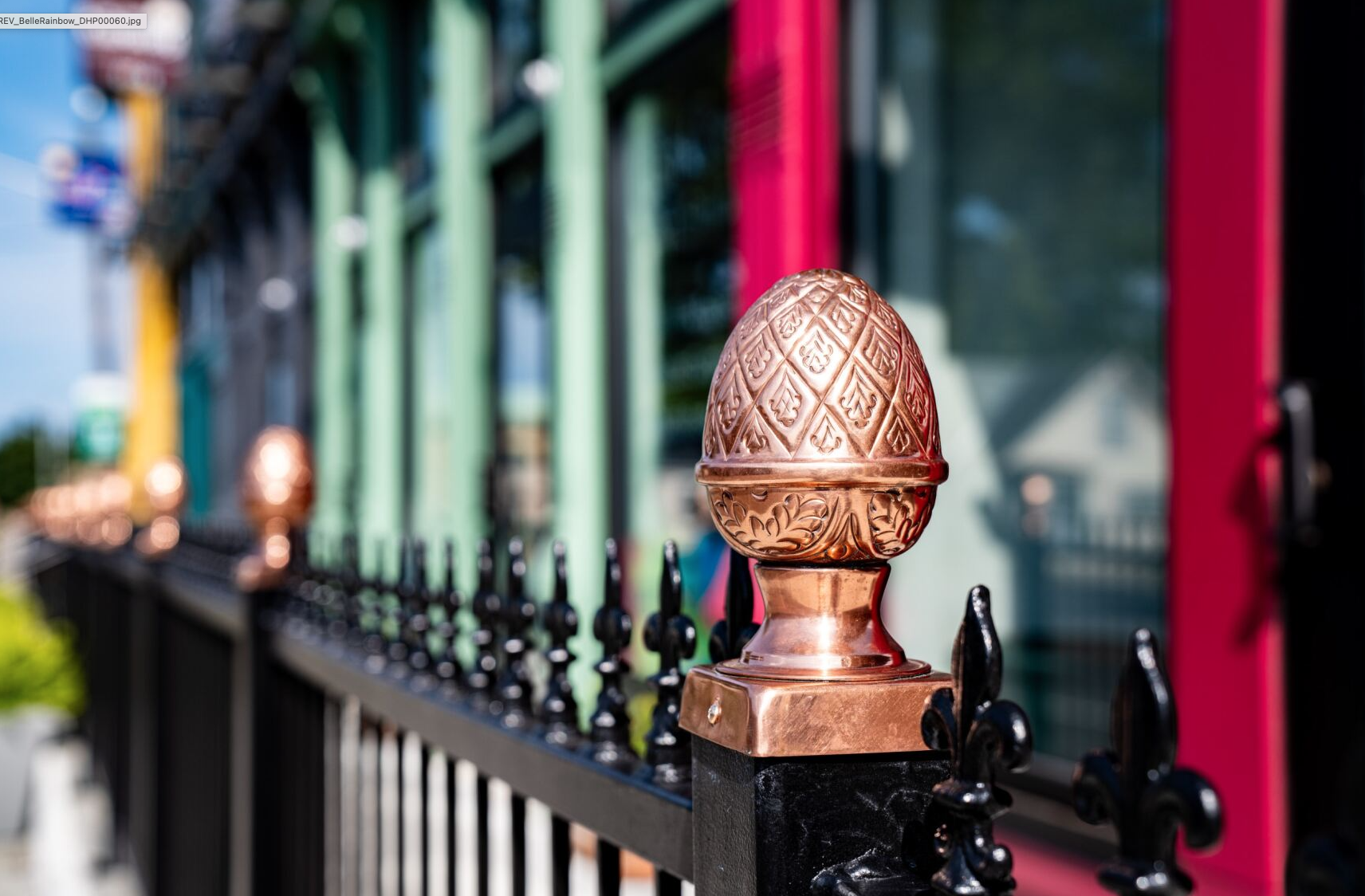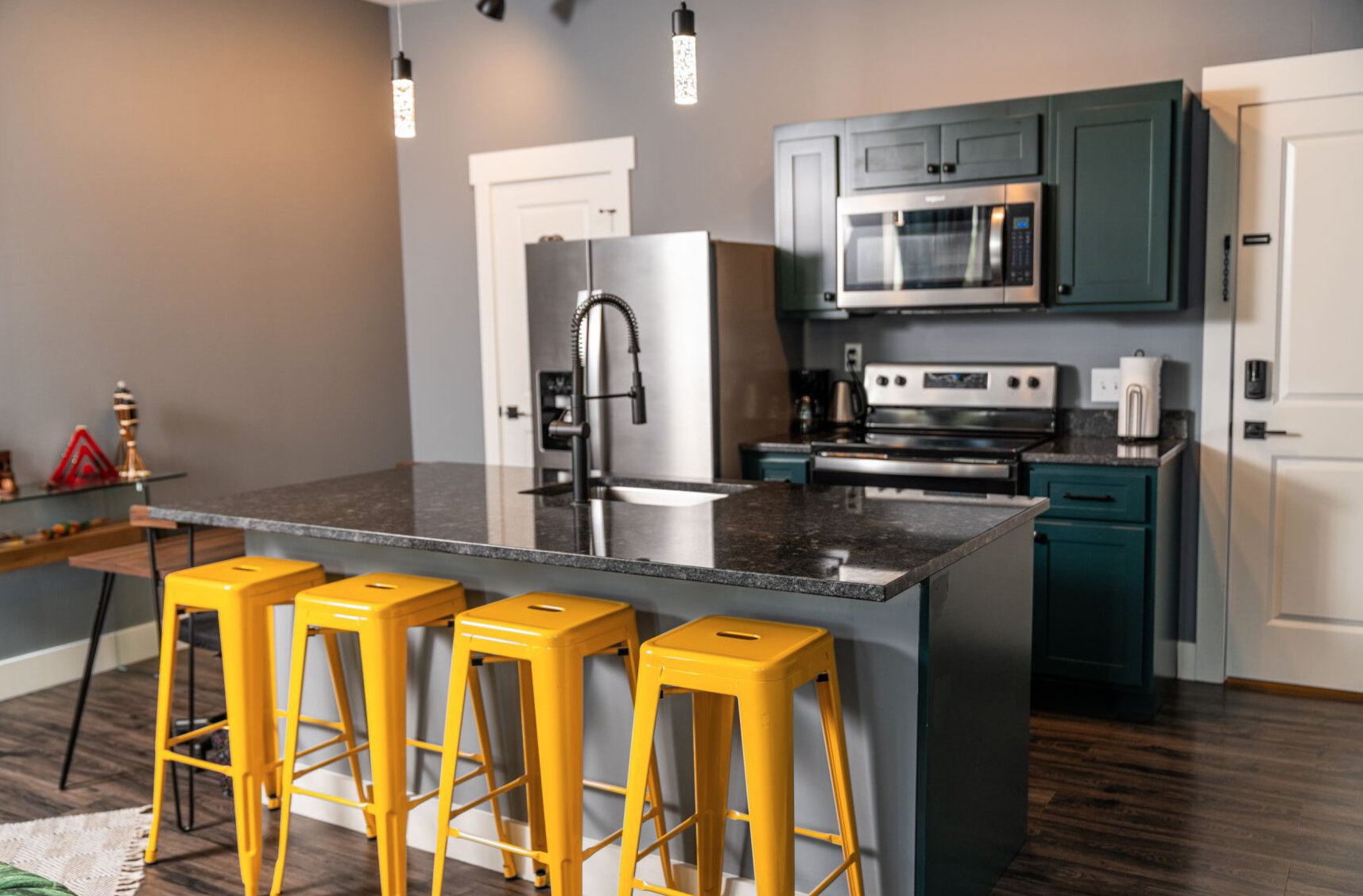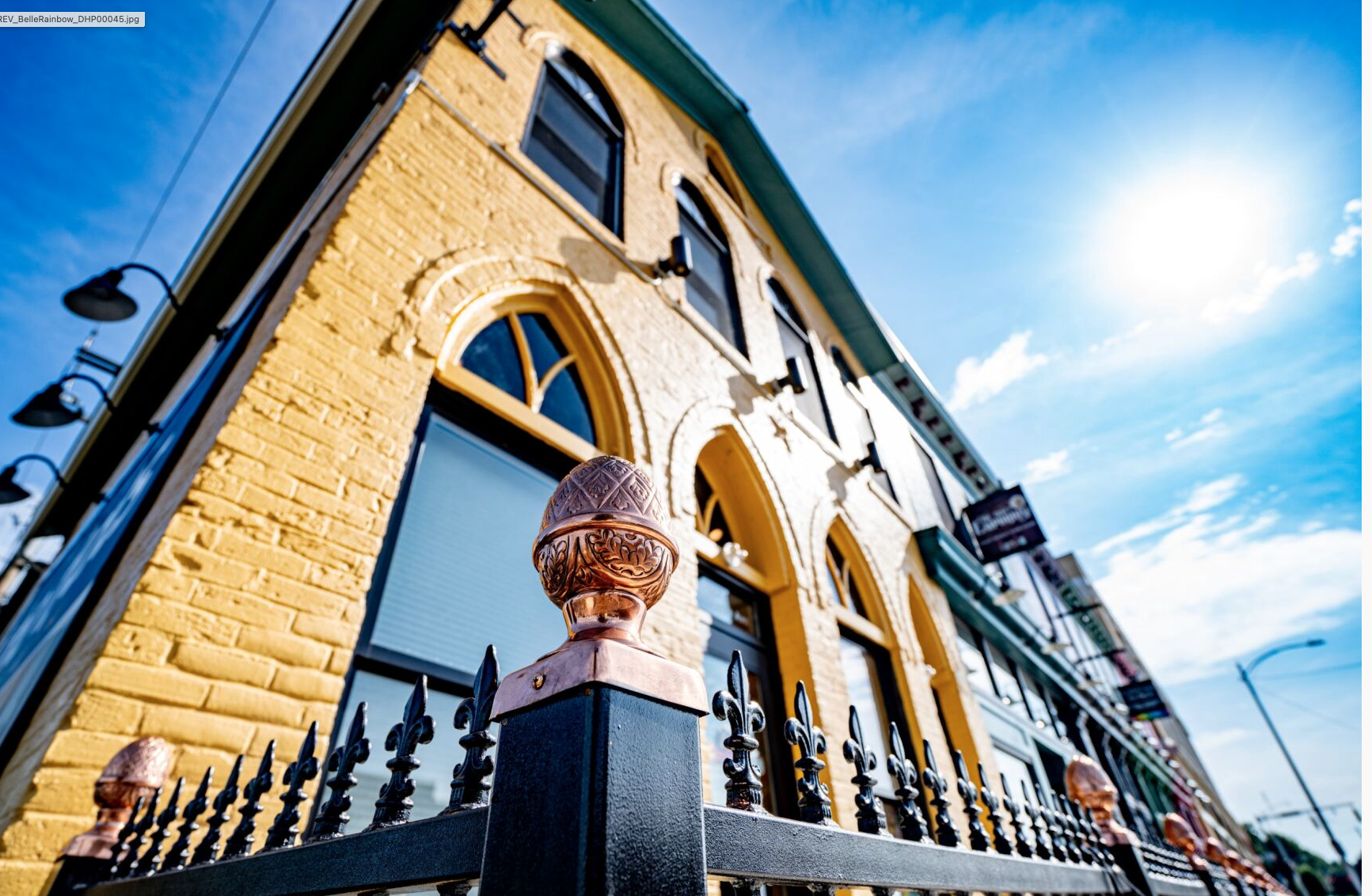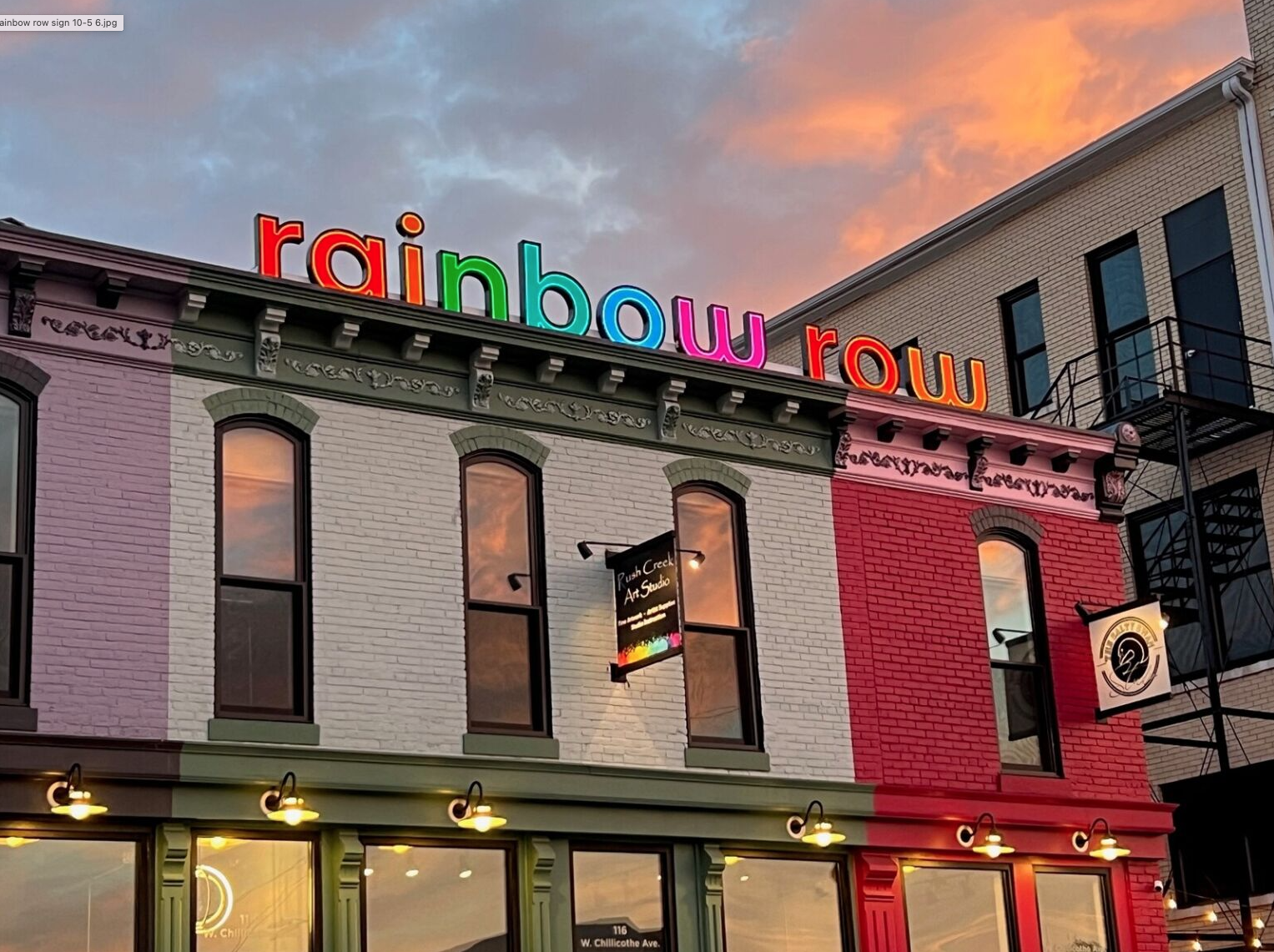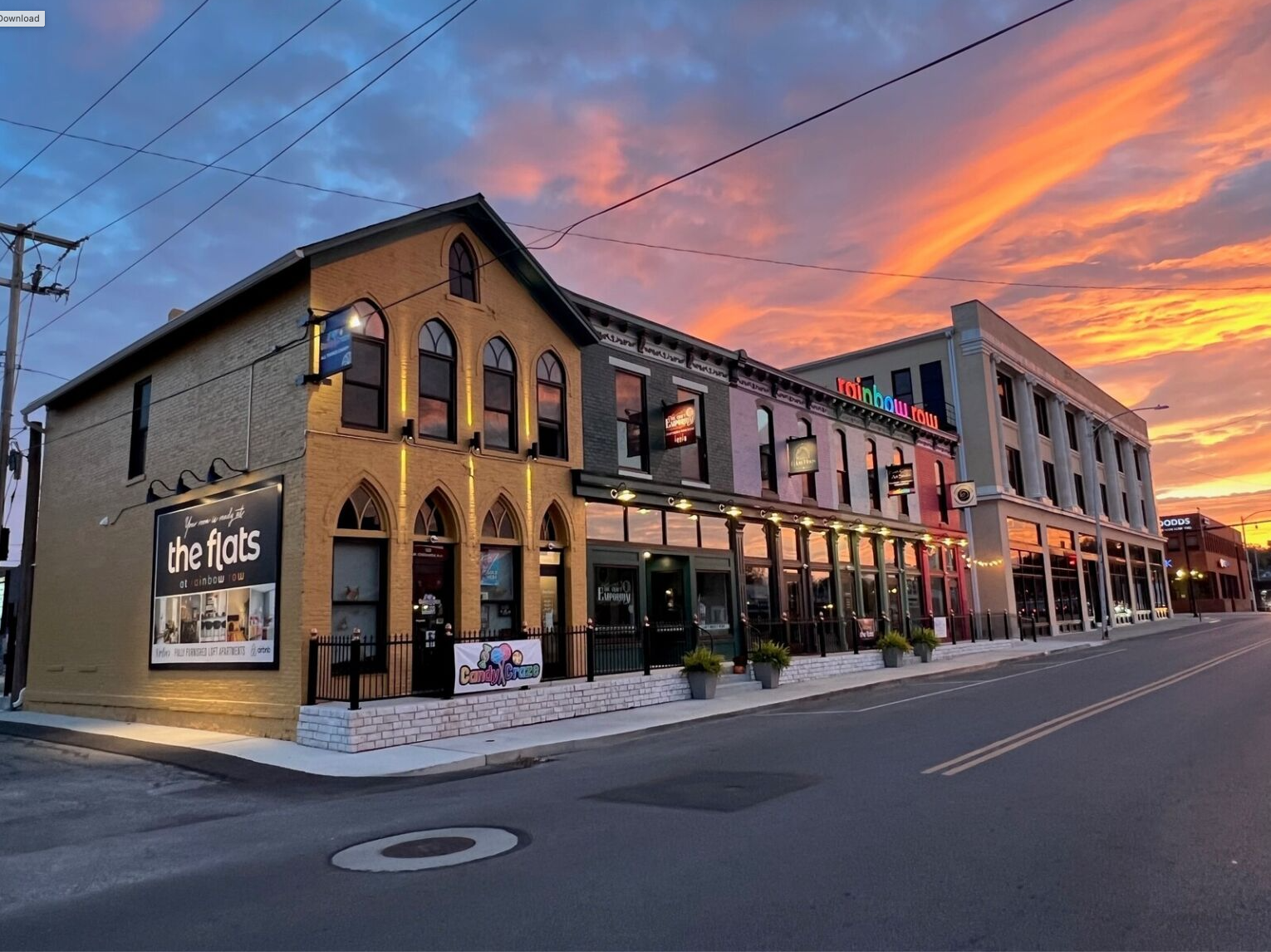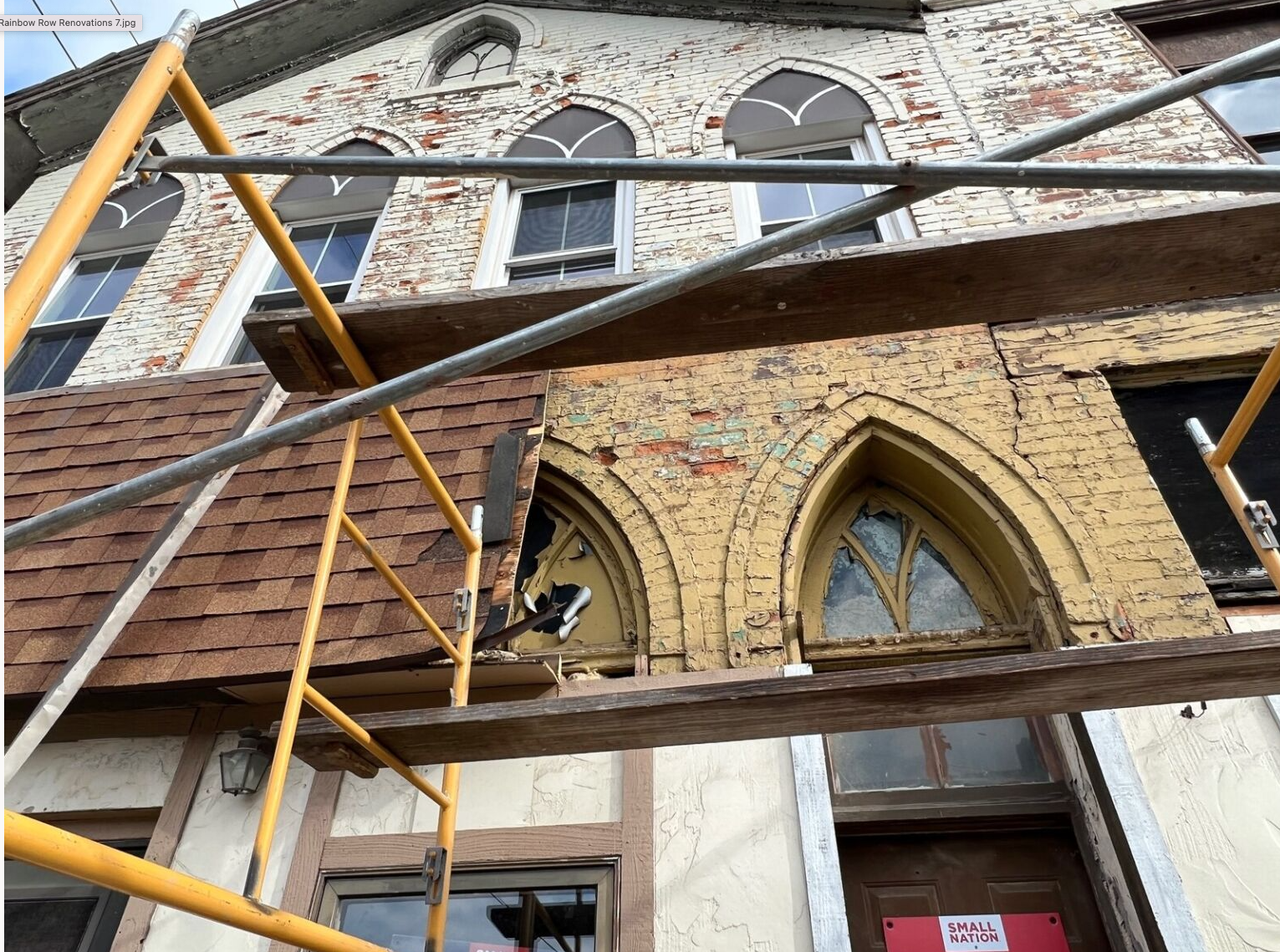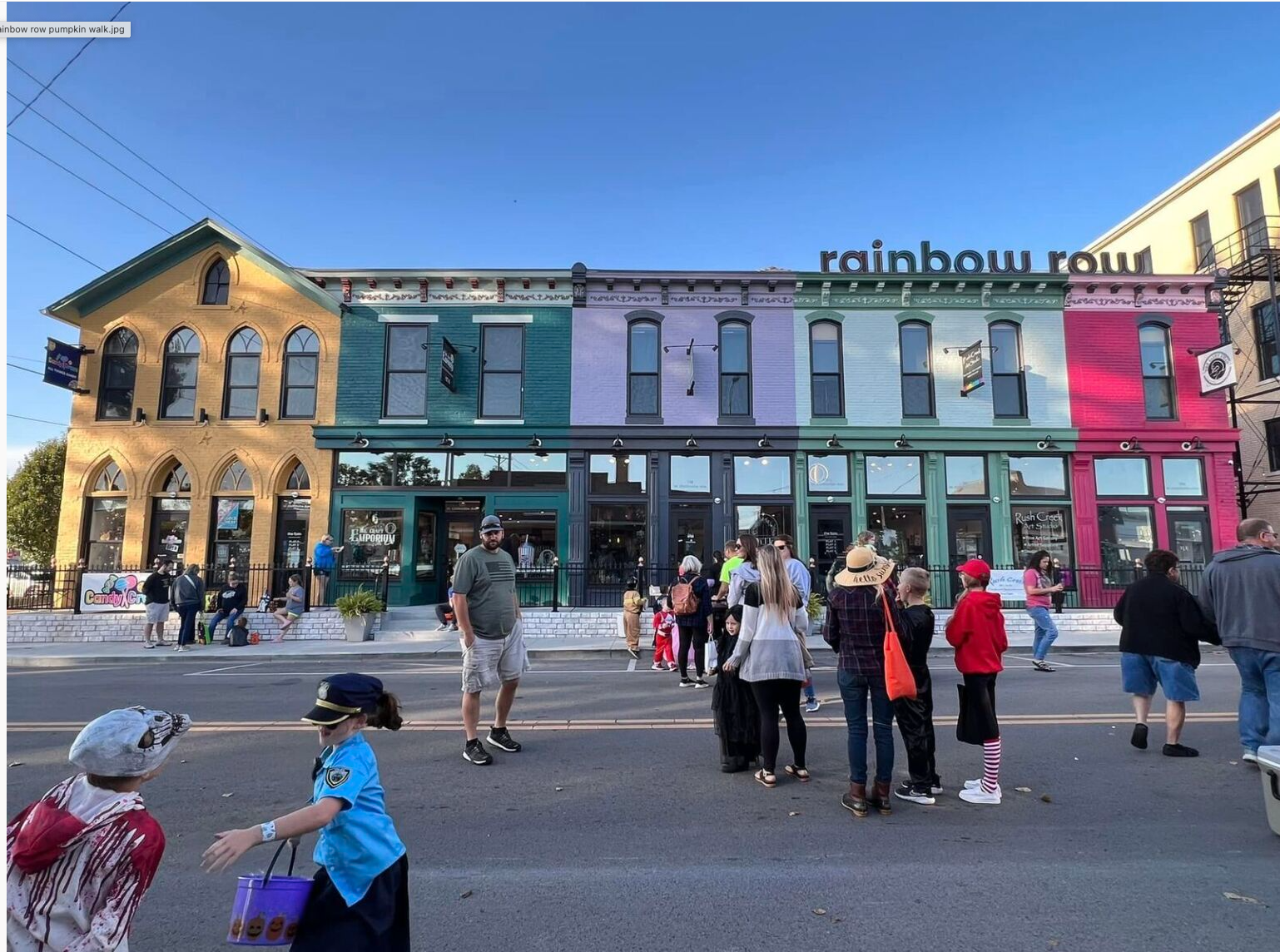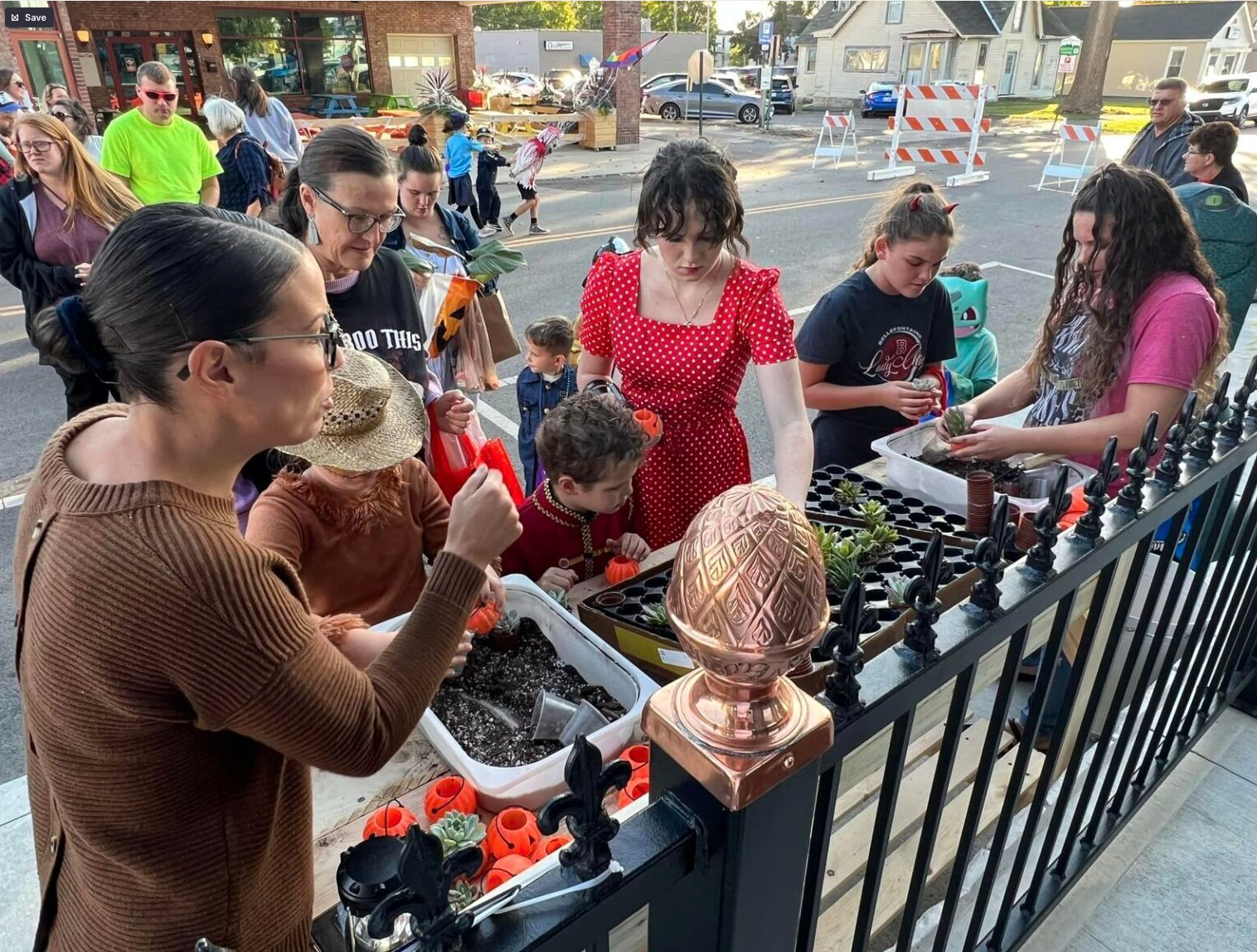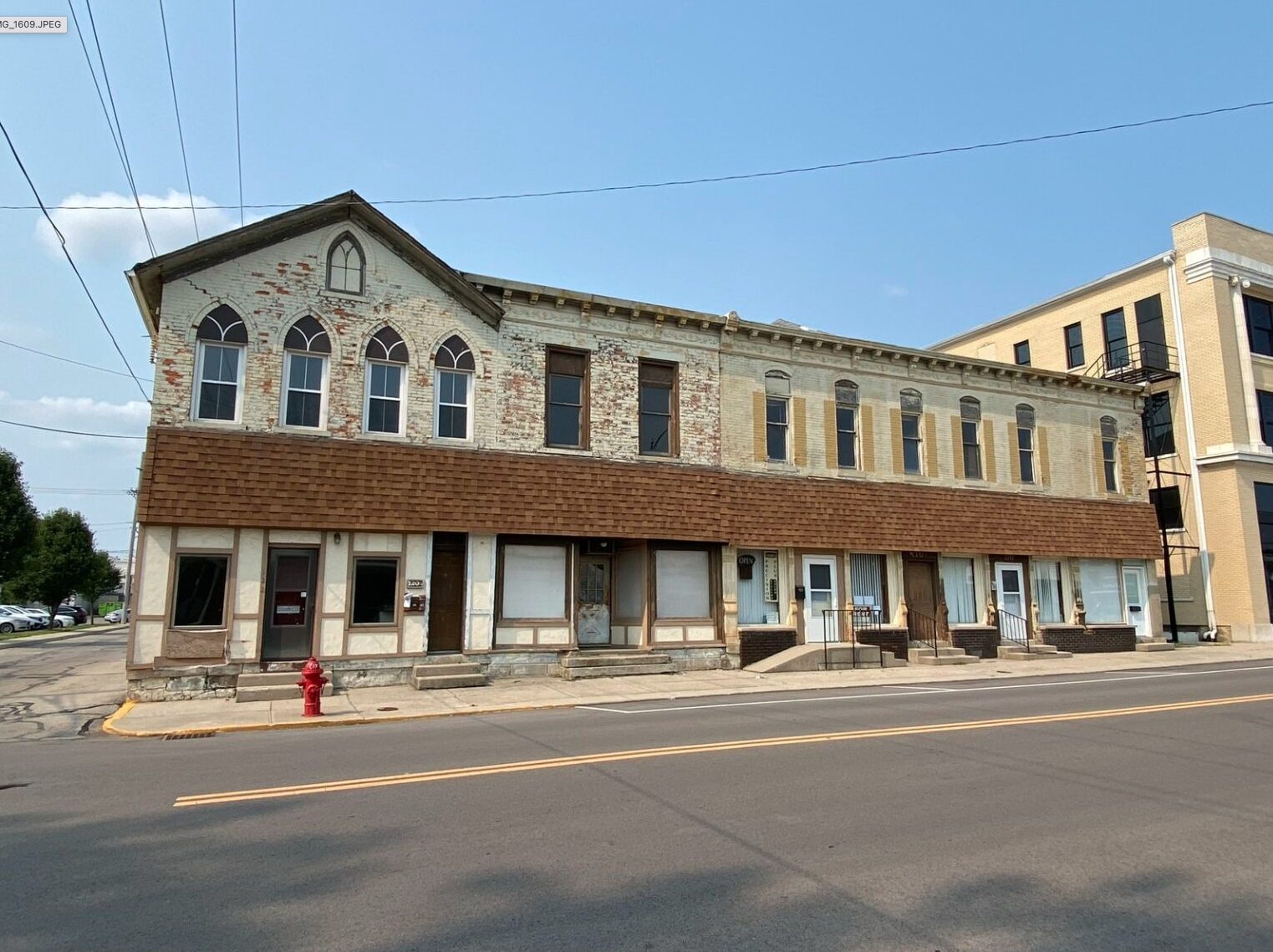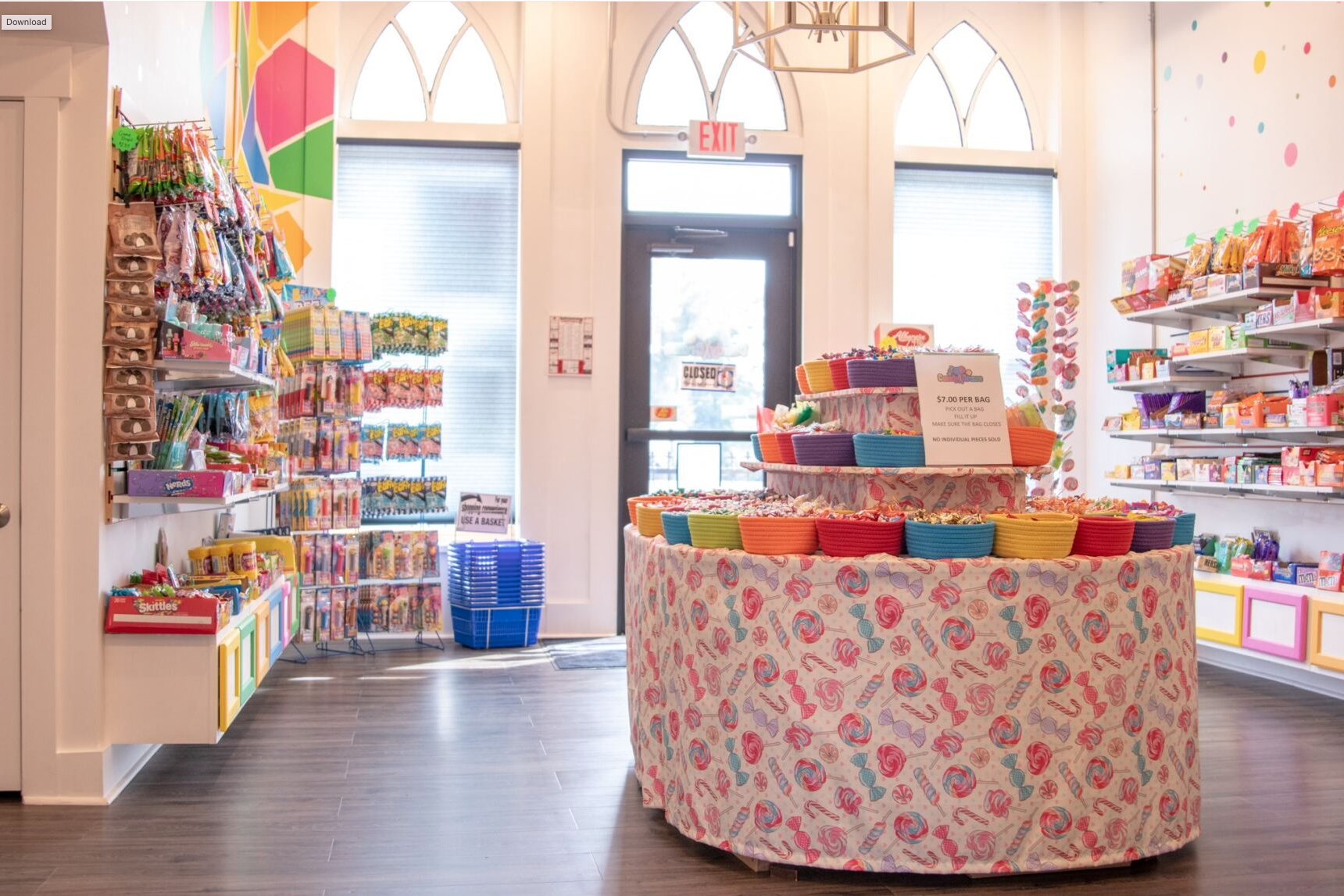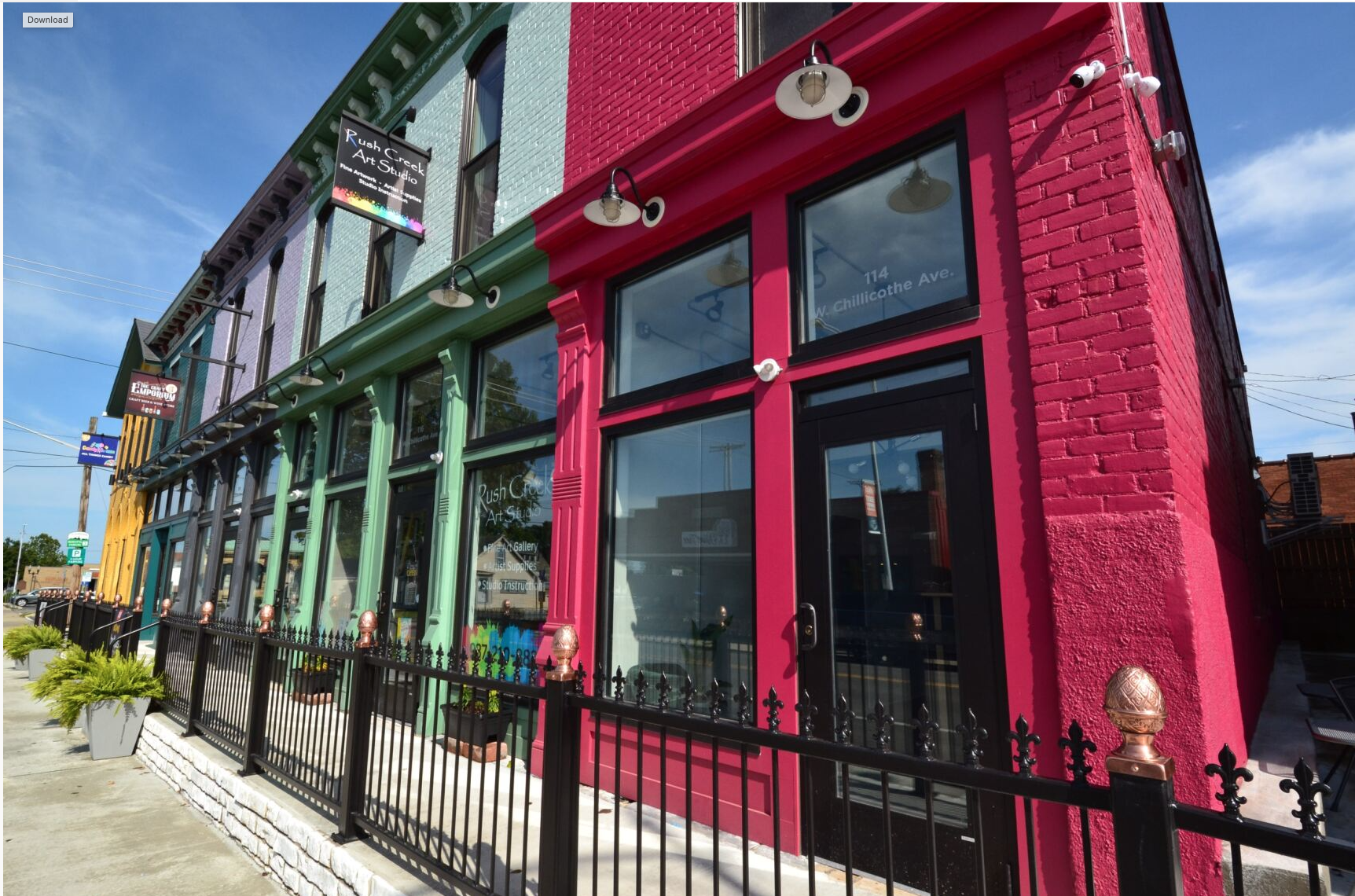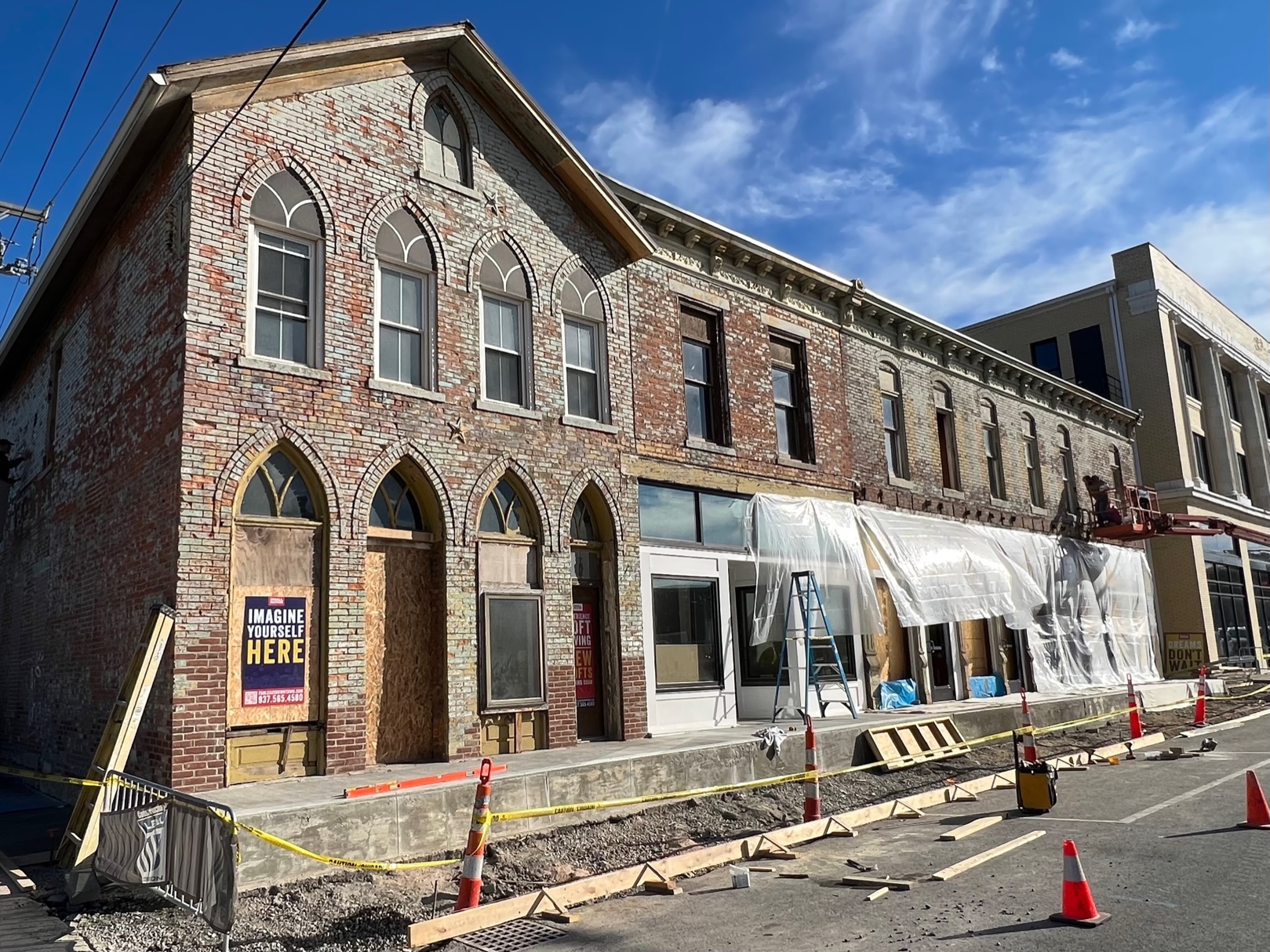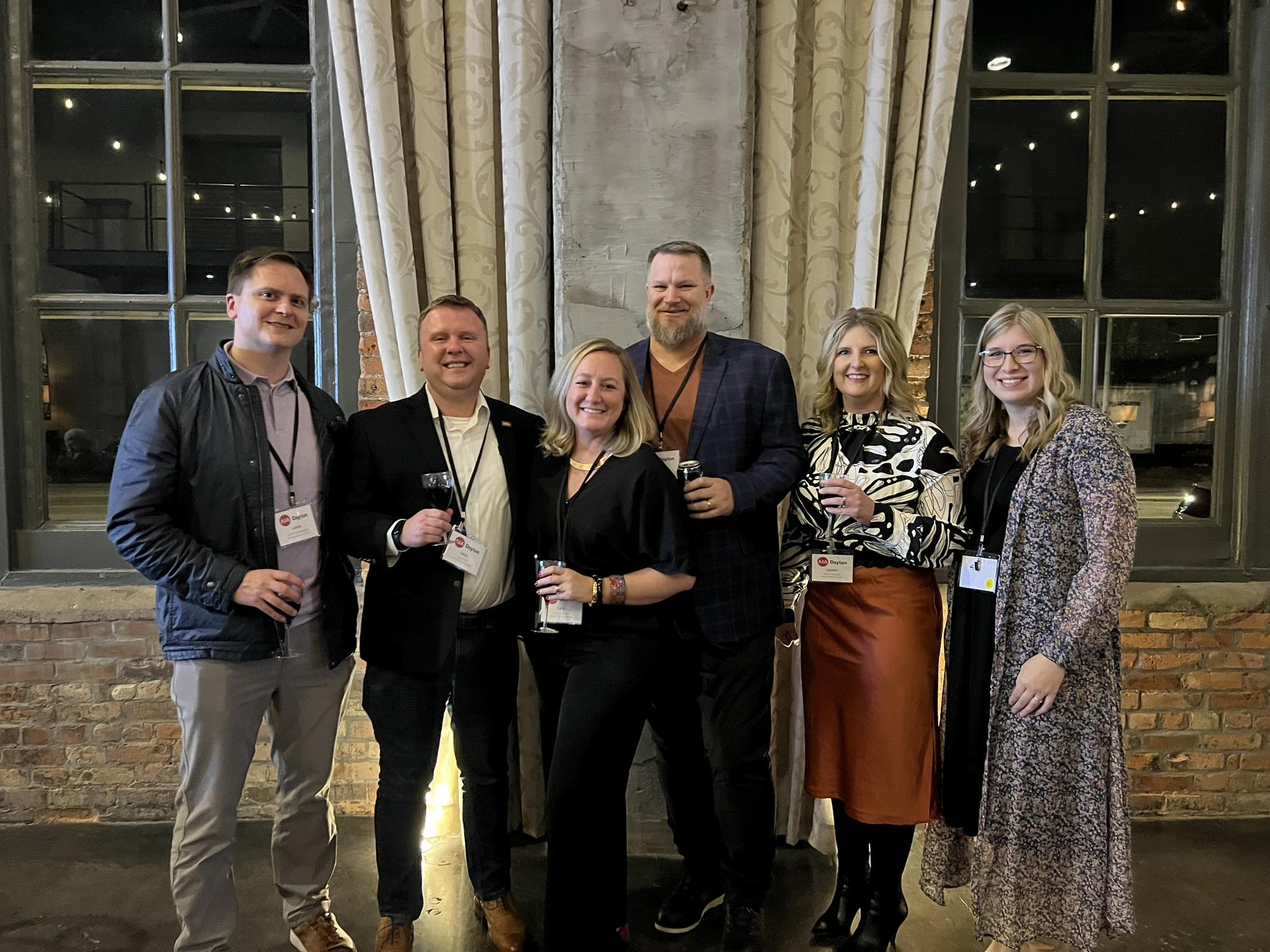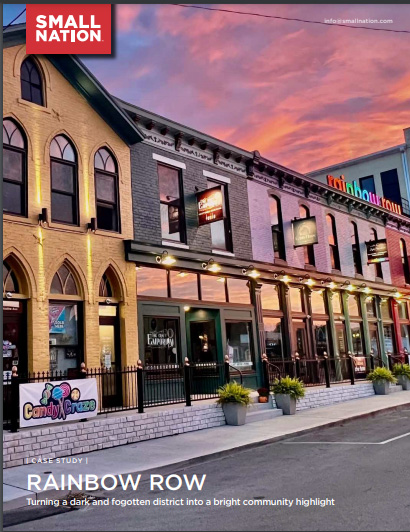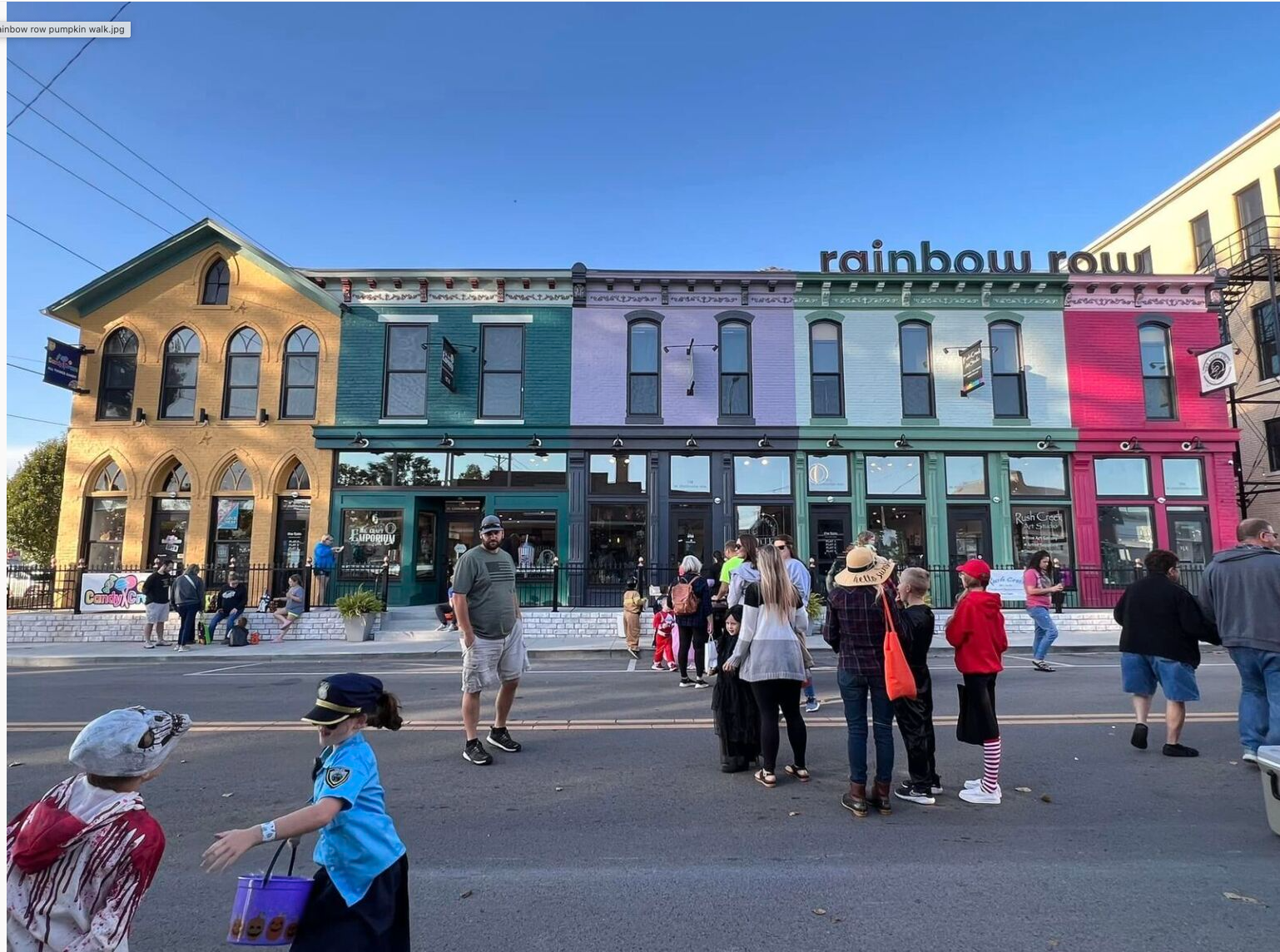
To say one of the oldest and most interesting building blocks in Bellefontaine was facing substantial decay is an understatement.
The five brick storefronts on Chillicothe Avenue were showing visible evidence of neglect and had become the cornerstone of dreary, stagnant energy in the community. Decades of paint were peeling from the brick, and the facade was a piecemeal mix of dated architectural styles and “quick fixes” that worked for the time being. While the storefront spaces have been utilized as a bar multiple times, as well as a salon and tattoo studio, the
neglect eventually took a toll. The result? An ugly block where no one wanted to spend time, much less money.
What not many people in the community knew was that on the inside of the buildings, things got much, much worse. The buildings had become blighted and untenable, infested with roaches, and a genuine nuisance to the community. This row of architectural despair stood in stark contrast to the vibrant potential of the downtown area.
What was the solution? Turn the darkness around by creating as much light and vibrancy as possible.
History connects us
Small Nation partnered with Revival Design Collective to brainstorm possibilities. The question was posed: How do we turn an area that is dark and forgotten into something interesting and bright?
The city of Bellefontaine has a much-loved symbol that represents its welcoming spirit. The pineapple has long been a symbol of hospitality and warmth. Used frequently in the colonial period in the United States, the pineapple, with its (then) high cost, exotic nature, and rarity, had the power to make guests feel truly special and embraced. Its desirability was so great that people would go as far as renting this fruit to have a brief opportunity to impress their visitors. The presence of a pineapple was a testament to the host’s unwavering commitment to showcasing exceptional generosity and hospitality. The pineapple became the symbol of hospitality in many southern cities, and Charleston, South Carolina, was one that embraced it fully
As we brainstormed, it became clear that the “Pineapple connection” between Bellefontaine and Charleston may offer more inspiration that we could draw upon for our project. In Charleston, there were 13 iconic pastel-colored row houses called “Rainbow Row.” The brightly colored structures are a popular tourist attraction and symbol of the city’s hospitality.
What better way to brighten up this area of Bellefontaine? These Charleston traditions not only helped give our project cultural relevance but also honored the oldest structure on our Chillicothe Street block, which was constructed before 1864.
The connection with our own history and the historical traditions of Charleston sparked excitement, pointing us toward a more inspired and cohesive project: The Revival of Rainbow Row.
Designing for a better future
Revival Design Collective’s task was to design Bellefontaine’s very own “Rainbow Row.” The goals of the project were multi-faceted. First and foremost, Small Nation aimed to restore Rainbow Row to its former glory by preserving its historic beauty and character. The goal was to strip the buildings down to their historical bones and bring new life into the old, tired structures.
Our objective was to restore these historic buildings and create an appealing space for new businesses and a destination area within the town itself. Brightening up this block opened a significant opportunity within Bellefontaine’s downtown landscape to create an engaging and vibrant arts area. People search for cultural experiences, unique shopping, and accommodations when visiting new places. The revitalization of Rainbow Row became much more than a renovation project; it was the catalyst for creating a whole new district.
Small Nation purchased all five buildings in the Rainbow Row block for $100,000 in 2021. The buildings were carefully renovated, preserving their historical assets and value while updating their functionality, energy efficiency, and aesthetics over the next 12 months. Space was designed to attract five unique businesses, as well as artists and creators, to set up shop on the first floor of the buildings, while the second floor was converted to seven
beautifully designed efficiency apartment spaces.
The facades were painted five bright, inviting colors, transoms that had been covered for decades were revealed, and all of the storefront window were
converted to energy-efficient glass. A channel-lit sign was placed on top of the building, clearly identifying the block as a downtown district.
From start to finish, 1.2 million dollars was invested into the Rainbow Row Arts District project, with income from twelve rental units supporting the development. The Durable Slate Company restored the beautiful and historic existing slate roof on one of the structures. Lee’s Roofing & Spouting installed a new metal and Duralast roof on the remainder of the property. Revival Design Collective led the architectural design and engineering. Level MB Construction completed all the construction work on the project.
Becoming neighborly
Our team planned to transform an old, decaying eyesore into a thriving, creative hub, so we proactively recruited businesses that fit the funky, artsy vibe we were attempting to create.
First on the list was to find someone to utilize the seven second-floor apartments as short-term rentals. There are only two hotels in the entire county and lodging has been a major issue facing the area. The Flats at Rainbow Row now offers beautifully curated and fully furnished shortterm rentals that are available for overnight, weekend, or extended stays.
The Craft Emporium, a craft beer store, was one of our first retail recruits. Candy Craze, a bright neighborhood candy store; Rush Creek Art Studio; Eden Haus, a plant store; and Salty Swan Tatoo Studio soon followed.
Not many small towns are actively recruiting tattoo studios, but maybe they should be. Salty Swan is a local artisan, providing detailed and high-quality tattoos that people travel for miles to receive. When they come to receive their tattoo, they often stay upstairs at the short-term rentals, eat at downtown restaurants, and visit other downtown businesses.
The Rainbow Row district offers truly unique retail options to locals and visitors, and the addition of short-term rentals creates a symbiotic environment for other businesses downtown.
The community accent chair
Small Nation’s successful launch of the rejuvenated Rainbow Row exemplifies how such revitalization projects can breathe new life into struggling areas. It’s not just because it’s a unique development project though. Think of your downtown area as a welcoming “living room” for visitors. What makes it comfortable? What area do they gravitate to? In every living room, there exists an accent chair that serves as a focal point, capturing attention while harmonizing the entire space. Similarly, this project can be likened to the downtown’s accent chair. Although it deviates from the traditional design guidelines, it unifies the downtown area by offering a captivating and distinctive ambiance that entices visitors and sparks their desire to capture moments through photographs. An accent chair is indispensable for every small town downtown.
The Rainbow Row project has not only become a catalyst for community inspiration and pride; it has also received accolades for its attention to detail and high-quality design.
Revival Design Collective, Small Nation’s architecture and design partners, received a Merit Award for Rainbow Row from the Dayton Chapter of the American Institute of Architects. The American Institute of Architects recognizes projects based on its Framework for Design Excellence. Rainbow Row Bellefontaine was designed under the principles of economy and integration. Once a building sitting empty, it is now full of businesses in versatile and adaptable street-level storefronts with short-term rental units encouraging growth and tourism in the community. The color palette is distinguishable but cohesive, reflecting the uniqueness of each business. The porch railing design adds pineapple finials on the rail caps, reflecting the hospitality and city symbol of Bellefontaine.
This project not only exemplifies successful revitalization and economic development but also serves as an architectural inspiration, showcasing the possibilities when a small town decides to invest in itself.
